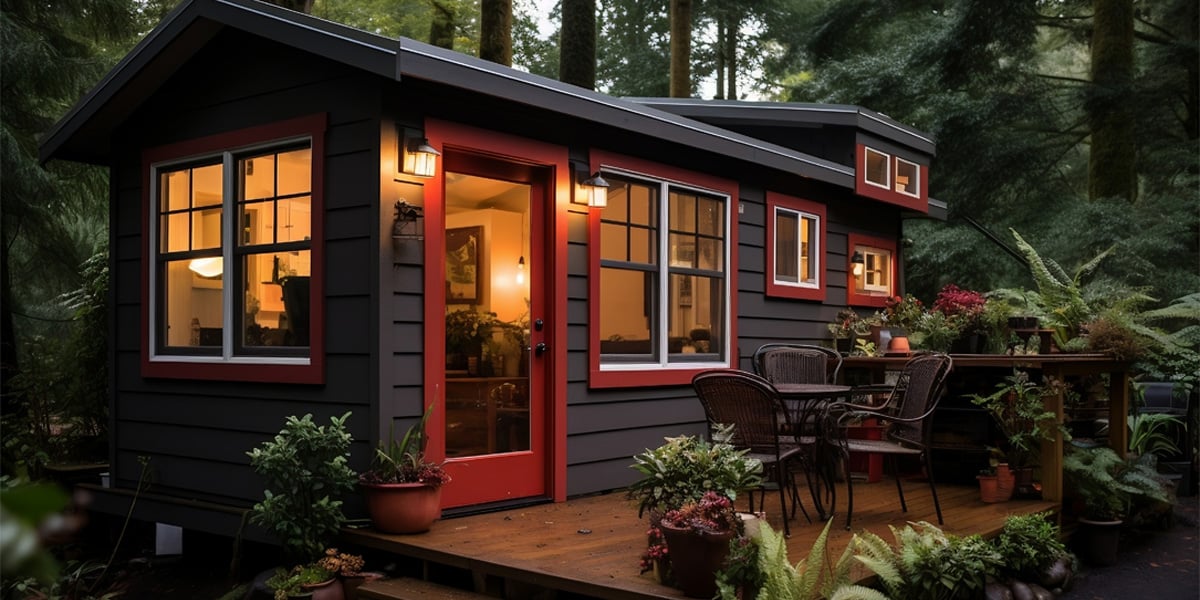
Maximizing Property Potential: The Financial Benefits of ADUs
Accessory dwelling units (ADUs) are separate residential units constructed on the same land as the primary home.
Also known as “granny flats,” ADUs are fully functional and independent living spaces equipped with their own kitchens, bathrooms, and bedrooms or sleeping lofts. ADUs can either be attached to the main residence (like a converted basement or garage) or built separately on the property as a standalone cottage or apartment.
ADUs offer real estate investors a great opportunity to earn additional rental income and add value to existing properties.
Basic features and benefits of constructing ADUs
ADUs have gained popularity in various regions like urban areas due to their potential to address housing shortages, create additional income streams, and offer flexible living arrangements.
Like all new real estate construction, building regulations for ADUs include zoning laws, size restrictions, parking requirements, and permit requirements that vary by location and region.
Some of the benefits of investing in ADUs include:
Rental income
Many real estate investors use ADUs within their rental properties to generate additional income. The units provide a separate living space for tenants to give the investor an additional source of passive income.
Home office or studio
As more and more people join the remote workforce, ADUs can also function as home offices, art studios, or workshops, providing a dedicated space for work or creative projects separate from the primary residence.
Affordable housing
In areas facing housing shortages, ADUs can be an invaluable tool to increase affordable housing options quickly and efficiently without extensive new construction. They use existing space within neighborhoods and can be more cost-effective than building new structures from scratch.
Determining ROI (return on investment) for ADU construction
ROI (return on investment) calculations for an ADU can vary significantly depending on location, market demand, property size, rental rates, and individual circumstances, and access to financing.
Some of the factors that can help you weigh the potential ROI on your ADU investment include:
Costs of construction
Calculate the total expenses involved in building the ADU. Typical expenses may include architectural and design fees, construction costs, permits, utility connections, landscaping, and any additional expenses related to complying with local regulations.
Expected rental income or savings
Estimate the potential rental income if you plan to rent out the ADU. Research rental rates in your area for similar units to get an idea of potential earnings. If using it for family or personal use, consider the savings in housing expenses it might provide compared to other housing options.
Operational expenses
Account for ongoing operational expenses such as maintenance, repairs, utilities, property management (if applicable), insurance, and property taxes associated with the ADU.
Market conditions and appreciation
Factor in the potential appreciation of your property due to the addition of the ADU. While not an immediate return, an increase in property value over time can significantly impact the overall ROI.
It’s also important to consider how long it might take to recoup your initial investment based on the rental income or savings generated by the ADU. Consider whether you plan to keep the property long-term or if you intend to sell in the future.
Local regulations and incentives
Some areas may offer incentives, tax breaks, or grants for building ADUs. Consider any financial benefits or reduced costs due to local regulations that might affect the ROI.
Addressing local zoning laws and regulations
Navigating the permitting process for building an Accessory Dwelling Unit (ADU) involves several steps and considerations:
Research local regulations
Understand the zoning laws, building codes, and regulations specific to your area. Municipalities often have guidelines dictating ADU size, setback requirements, parking, and permits. Contact your local planning or building department to get detailed information.
Consult professionals
Engage with architects and contractors to help you navigate local regulations. They can help design an ADU that complies with all requirements, ensuring a smoother permit process.
Obtain approvals
Once your plans meet all requirements, you'll receive approvals or permits to start construction. Ensure you have all necessary permits before beginning any work to avoid legal issues.
Final approval and occupancy
After completing construction and passing all inspections, you'll receive final approval or a certificate of occupancy, allowing you to use the ADU legally.
Securing financing for ADU construction
Kiavi offers a range of real estate financing options like infill construction, rental, and fix-and-flip loans to fit your unique investment needs, along with the expertise to help investors access the capital they need.
Interested in exploring the potential of ADUs for your investment portfolio? Speak with a Kiavi representative today to discover the range of financing solutions we offer tailored to support your ADU projects. Our lending experts are here to guide you through each step, ensuring you have the right resources to maximize your investment's potential.